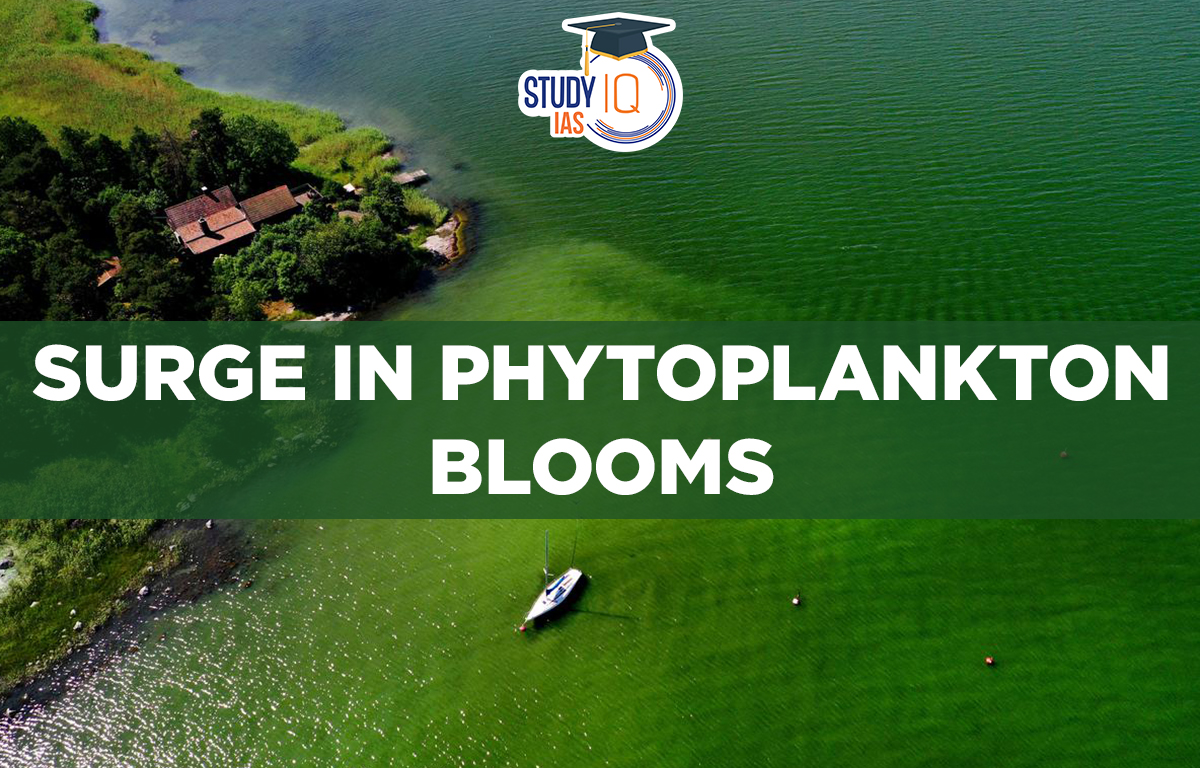Table of Contents
Context: According to new research, huge blooms of phytoplankton have become larger and more frequent along the world’s coastlines, bringing benefits to fisheries but also causing potential harm.
Observations of the Study
- The growth: Between 2003 and 2020, coastal phytoplankton blooms increased by about 13% in extent, covering an additional 4 million square kilometers of the global ocean.
- In this period, the blooms occurred more often, up by 59%.
- Pros and cons: While marine animals such as fish and whales eat phytoplankton, it can also prove toxic in large amounts, causing oxygen depletion in the oceans eventually leading to “dead zones” that distort the food chain and fisheries.
- Example: A 2016 algal bloom near Chile, cost salmon farms $800 million.
- Global inconsistency: While some regions saw weaker blooms over the past two decades, including the California Current, blooms strengthened in the northern Gulf of Mexico and the East and South China Seas.
- Reasons for the increase in Phytoplankton: The increase in phytoplankton blooms varies by region:
- In some cases, warmer sea surface temperatures are the reason behind the boom.
- Climatic changes can also disturb the ocean circulation, affecting mixing between ocean layers and how nutrients move around the ocean.
- Human development also plays a role.
- Fertilizer runoff from agriculture can spike nutrient loads in the ocean, leading to blooms (Eutrophication).
- More aquaculture around places like Finland, China, and Vietnam might be associated with more algal blooms.
- Regions where domestic waste is not treated can also be a possible cause for increasing blooms.
Phytoplankton
Phytoplanktons are tiny microscopic floating plants found in water bodies.
Importance:
- They contribute more than half of the oxygen in the environment.
- They reduce global warming by absorbing human-induced carbon dioxide.
- They also serve as the base of the ocean food chain.
- They are important bioindicators regulating life in oceans. Their abundance determines the overall health of the ocean ecosystem.



 Serious Fraud Investigation Office (SFIO...
Serious Fraud Investigation Office (SFIO...
 Article 142 of Indian Constitution, Sign...
Article 142 of Indian Constitution, Sign...
 Pakistan-Occupied Kashmir (PoK): History...
Pakistan-Occupied Kashmir (PoK): History...





















